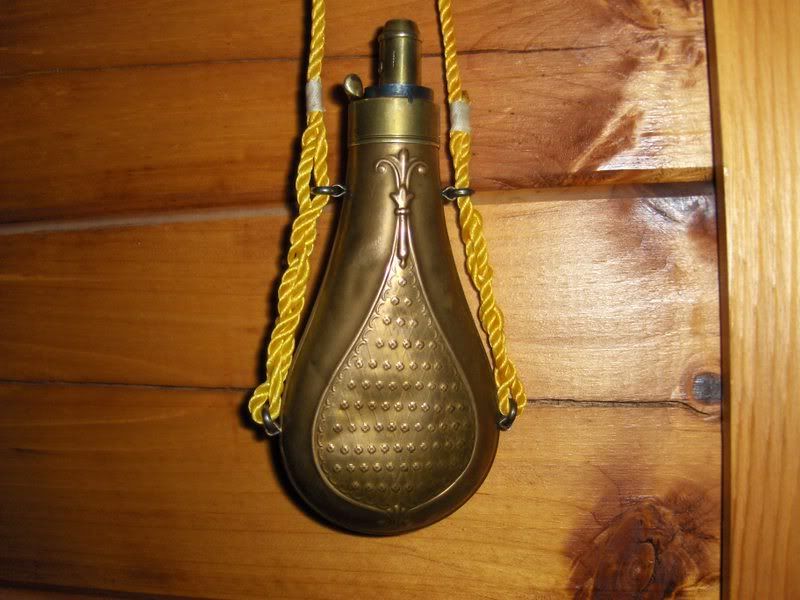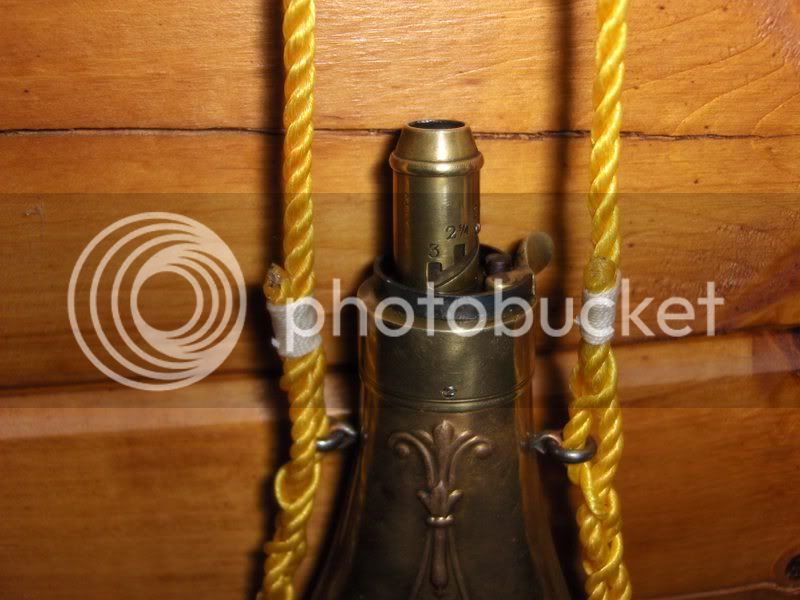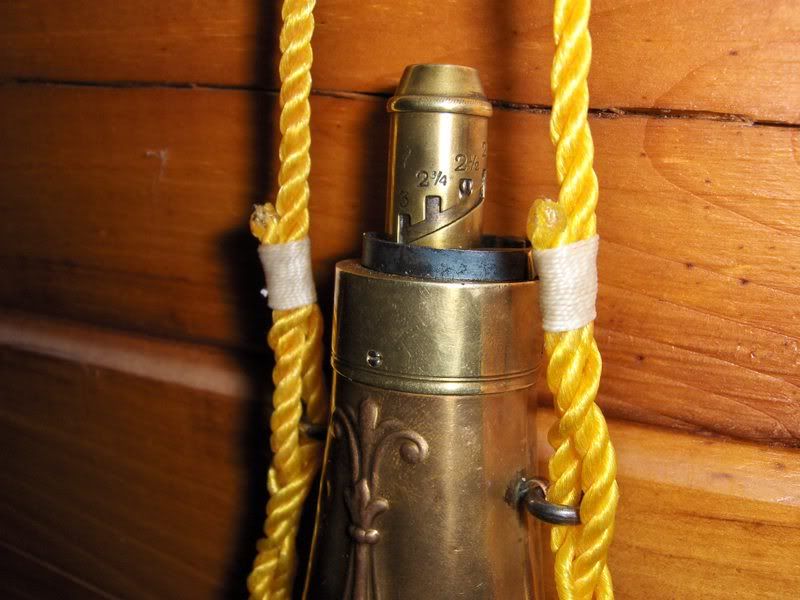I was looking for an adjustable shot measure at Track of the Wolf and my search pulled up this 7-1/2" beauty. An original J.W. Hawksley powder flask. It was only $15 more than the $49.99 reproductions they offer, which I'd been debating buying, so now it's home and going to be joining me on my fall/winter bunny and grouse pestering walks.




It has a replacement spring that is not quite proper but functions well and has a few crumples, but nothing severe. No splits, cracks or other maladys. If it was pristine I'd be afraid to use it, so this was ideal.




It has a replacement spring that is not quite proper but functions well and has a few crumples, but nothing severe. No splits, cracks or other maladys. If it was pristine I'd be afraid to use it, so this was ideal.





